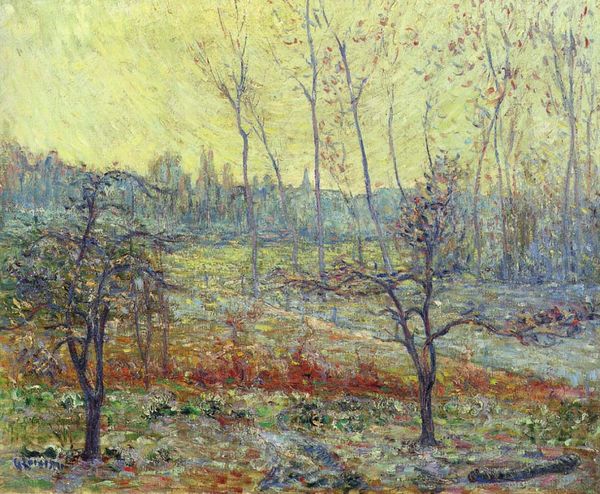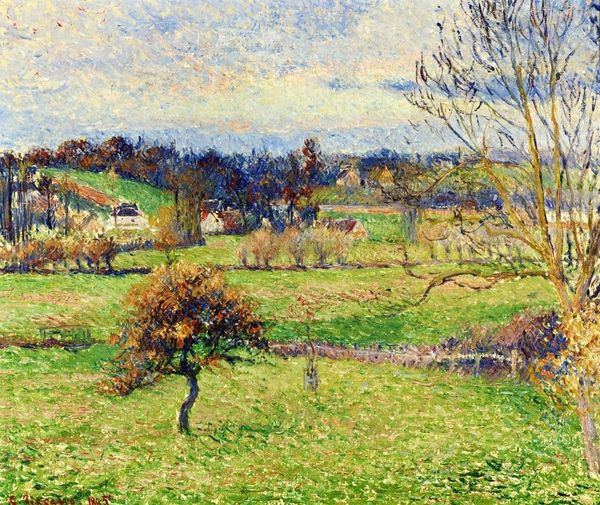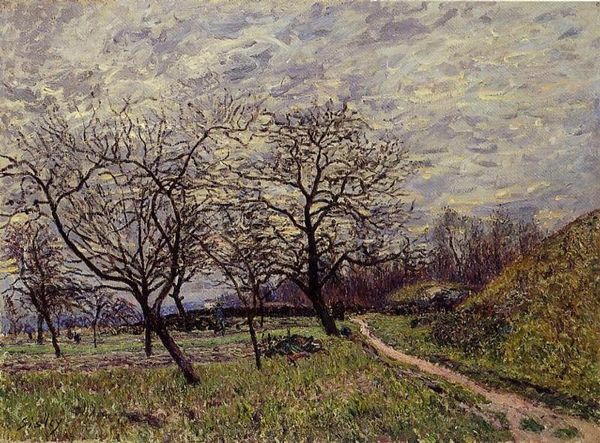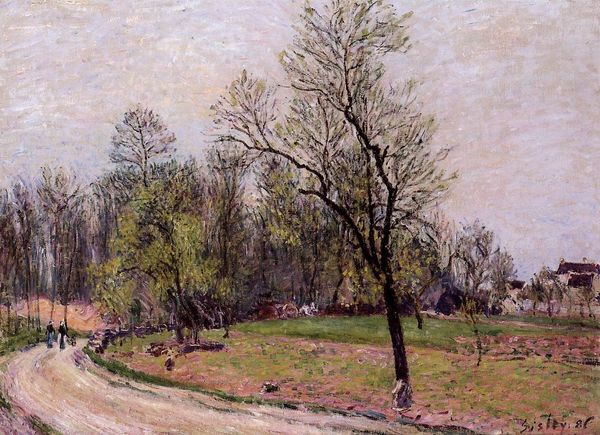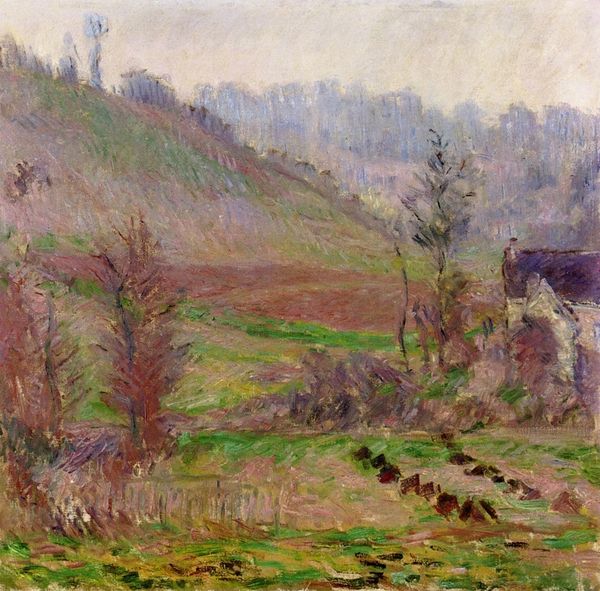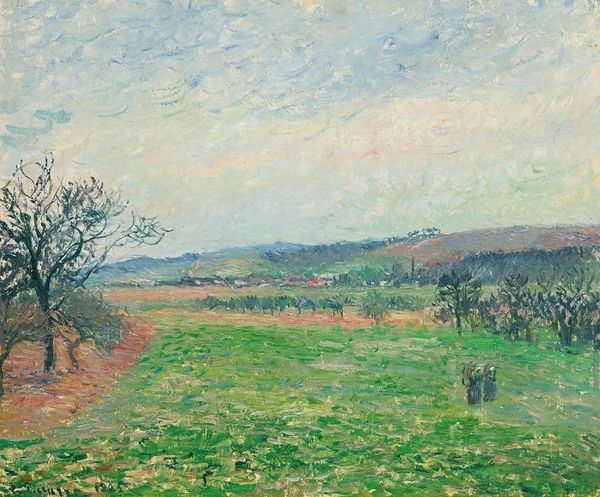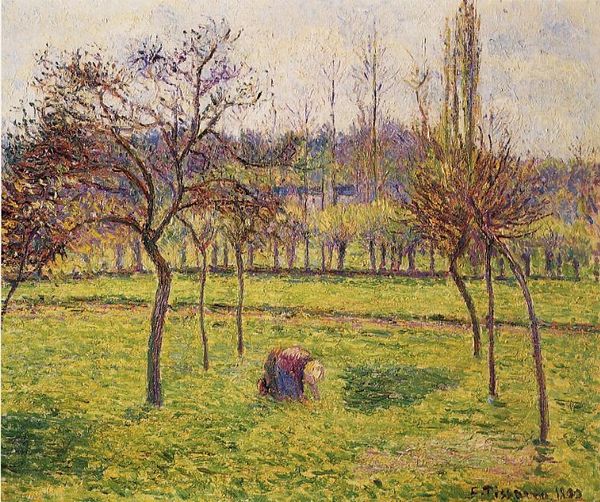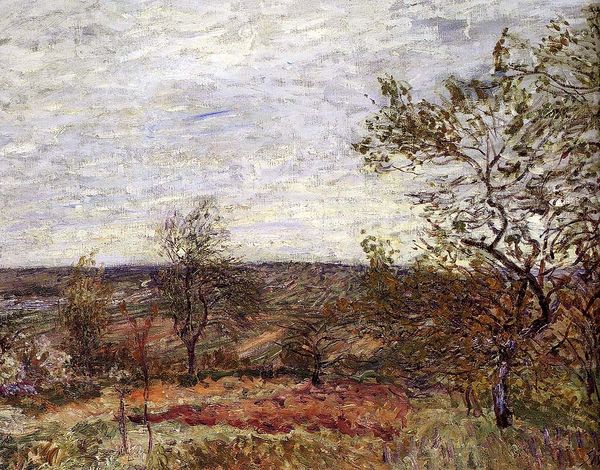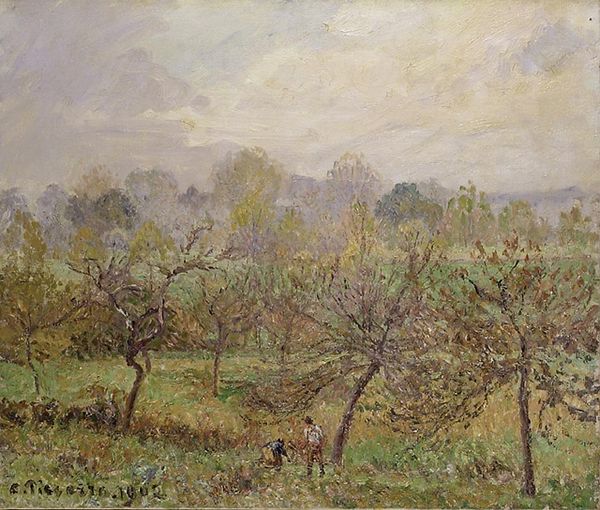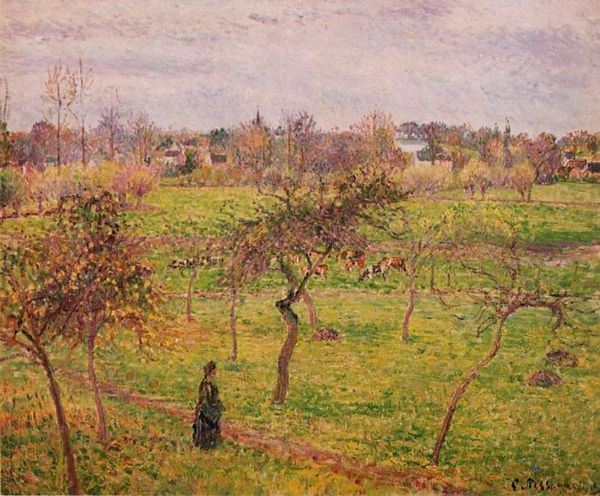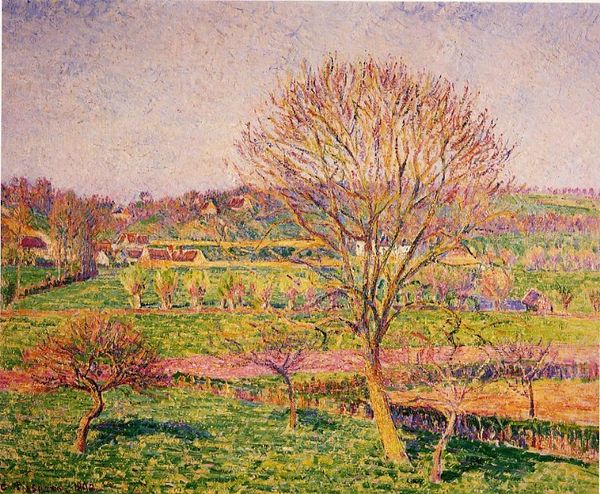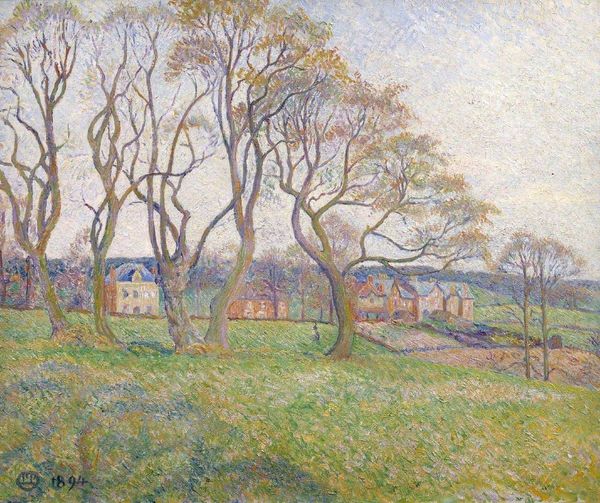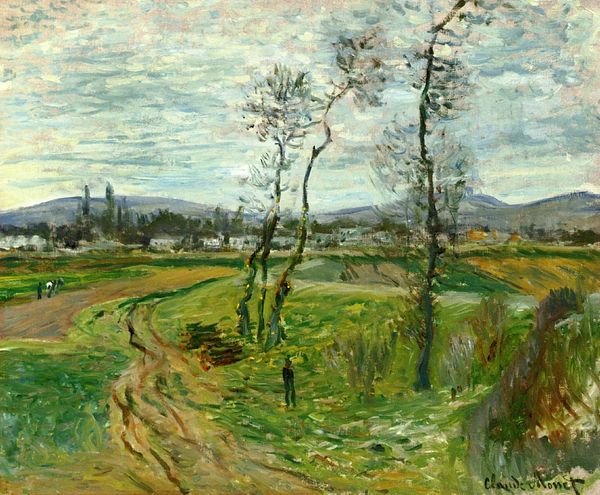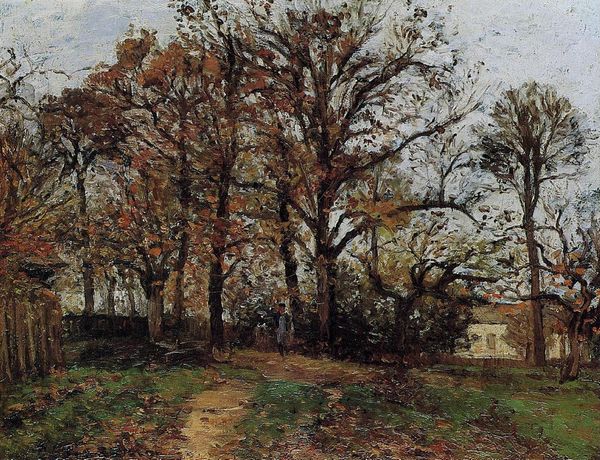
Dimensions: 61 x 74 cm
Copyright: Public domain
Editor: We're looking at "Overcast Weather at Nesles la Vallee" by Gustave Loiseau, painted in 1896. It seems to be oil on canvas, and what strikes me first is the composition—the way the bare trees in the foreground are almost a screen, drawing the eye back into the scene. How do you interpret this work? Curator: Note the deliberate construction: Loiseau presents a complex interplay of horizontal and vertical elements. The horizon line is obscured, yet felt, pressing against the upward thrust of the slender trees. Consider the texture. What does its roughness suggest to you? Editor: It’s a very broken surface, lots of small strokes…almost Pointillist but less regular. It makes me think about fleeting moments and changing weather. Does this roughness impact the way you see depth in the piece? Curator: Precisely. The impasto fractures the light, disrupting a clear recession into space. Observe how this pushes the buildings into flattened planes. And those slender trees? Are they not calligraphic lines dancing upon a textured ground? Editor: I see what you mean! So, even though it's a landscape, the focus isn't really on creating a realistic illusion. It's more about the paint itself, and how it interacts with the surface. Curator: Precisely. Disregard representational accuracy; prioritize the work’s construction. The atmospheric perspective bends to formal imperatives, no? Editor: It does, definitely. I initially saw it as just a pretty scene, but now I realize it's more about how Loiseau manipulates the paint and composition to create a distinct visual experience. I'll definitely be looking for that calligraphic line in the trees next time! Curator: An astute observation. Remember: meaning resides not in what is depicted, but in how it is articulated.
Comments
No comments
Be the first to comment and join the conversation on the ultimate creative platform.
